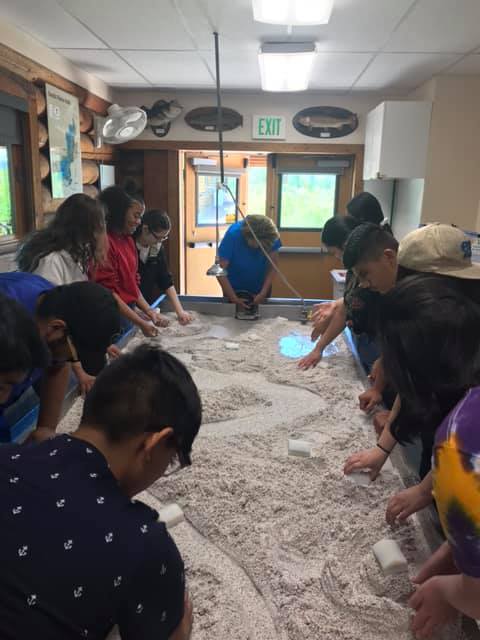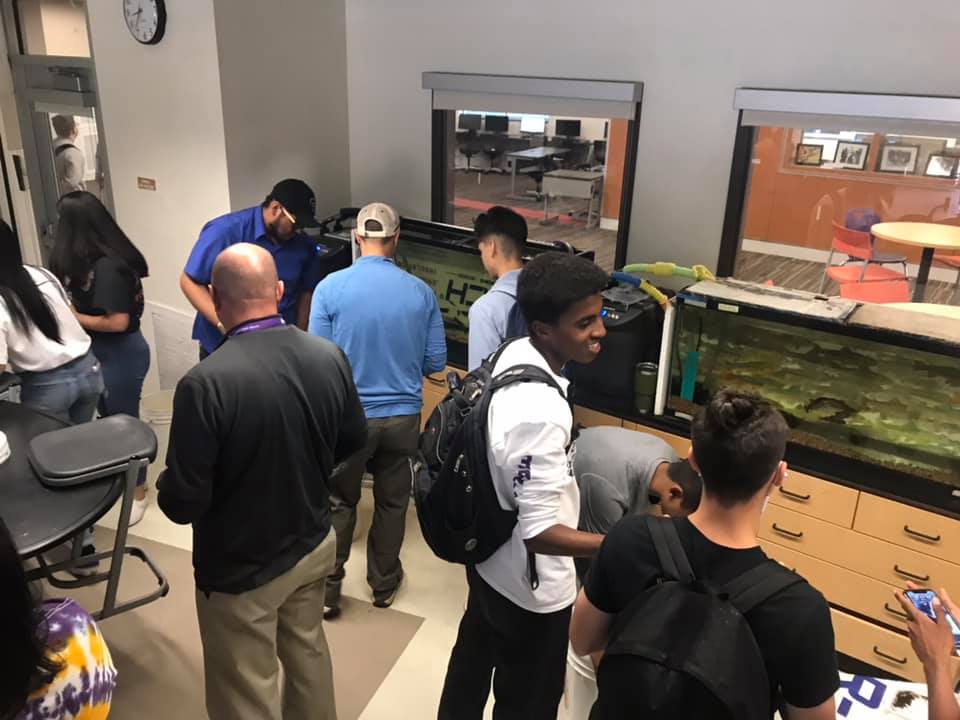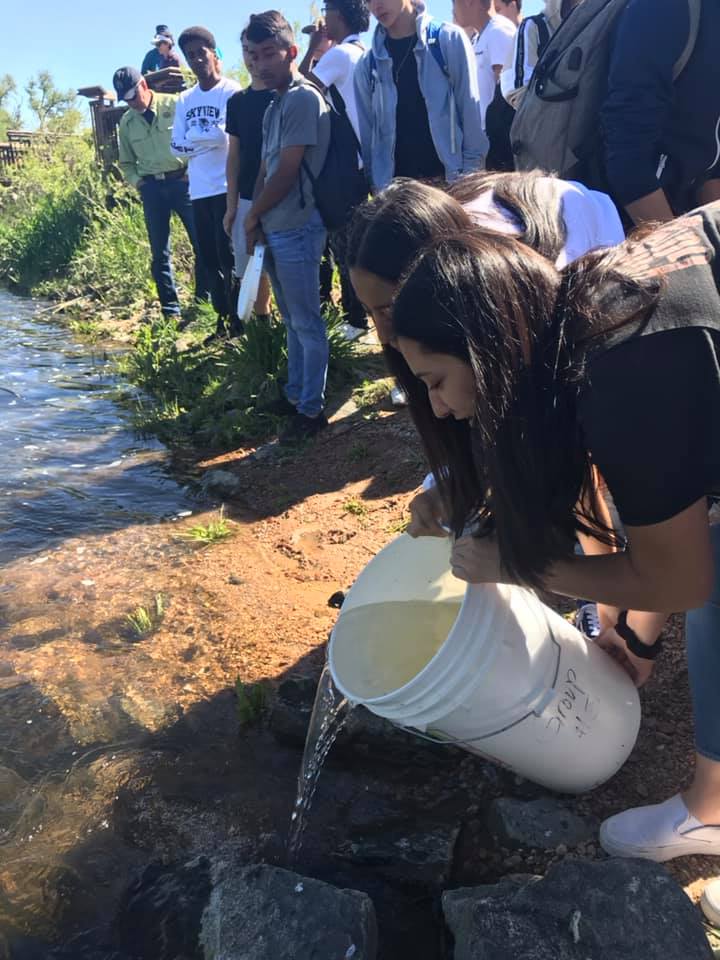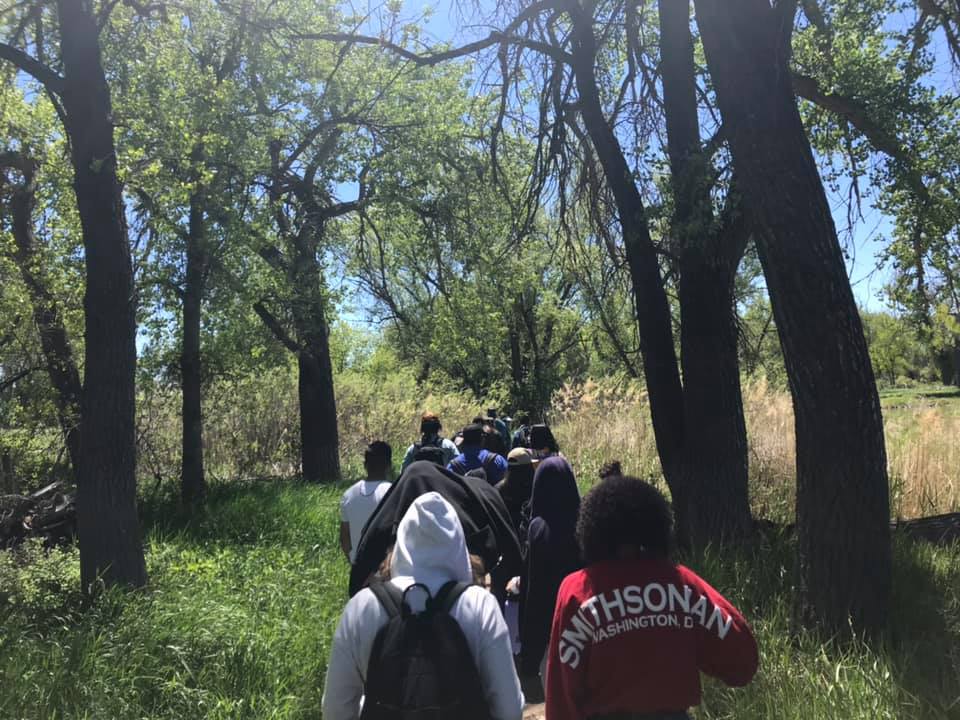Trout in the Classroom (TIC) is a conservation-oriented, environmental education program for elementary, middle and high school students. Throughout the school year students raise their trout from egg to fry, monitor tank water quality, engage in stream habitat study, learn to appreciate water resources, grow to understand ecosystems and begin to foster a conservation ethic. At the end of each school year, TIC classrooms release their trout into a state approved stream.
In the state of Colorado, there are 12 schools that take part in this program with a total of 17 tanks. Each program is led by educators dedicated to growing the next generation of environmental stewards.
On May 28th, Vanessa Grenader, a 5th grade teacher from Blackhawk, brought her students to Mayhem Gulch to release their 170 pet rainbow trout. Vanessa was accompanied by volunteers from the West Denver Chapter who talked with the students about water quality. Read more here.





On May 24th, Mike Sanchez’s high school class was joined by Bianca McGrath-Martinez of Colorado Trout Unlimited and Emma Brown of the Greenbacks for a release field trip at the Carson Nature Center in Littleton. The students were able to stock the South Platte with their trout, explore native plant species, and go on a nature walk.
On May 23rd, Todd Johnson set out on his first release field trip accompanied by the Denver Trout Unlimited chapter. Todd’s 3rd graders were able to release 60 trout — most of which have names.























